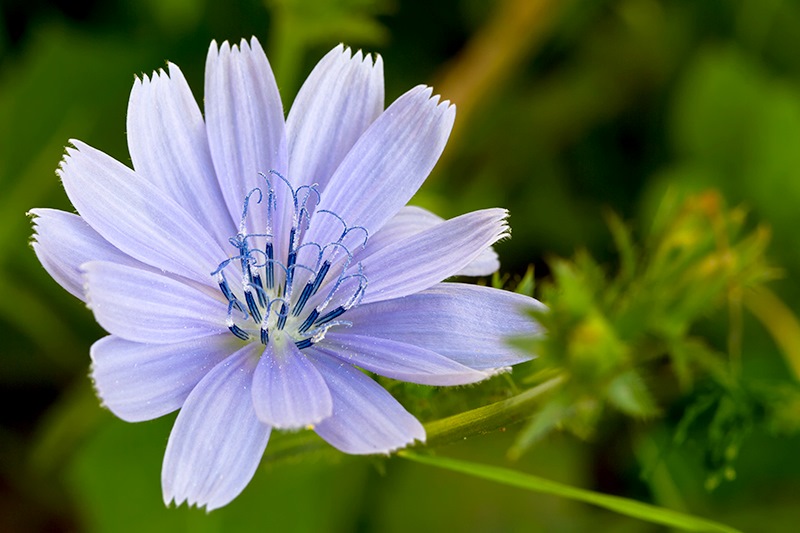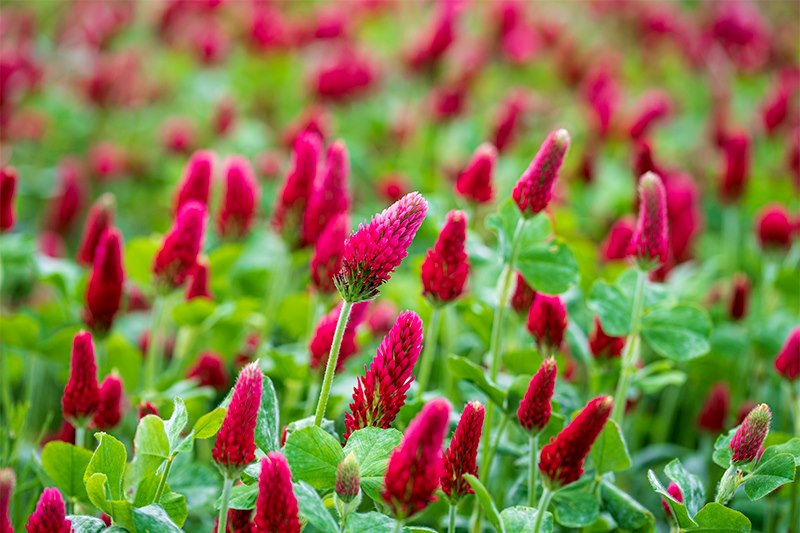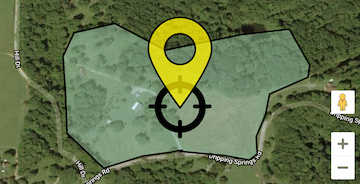Forage Chicory-Cichorium intybus

By Kent Kammermeyer, Senior Wildlife Biologist
Origin/Description
Forage chicory is a broad-leaved perennial herb in the sunflower family that looks similar to common plantain. It can be grown on well-drained or moderately drained soils having medium to high fertility and a pH of 5.5 or greater. Chicory has good seedling vigor and a deep taproot, which makes it quite drought tolerant. Though it remains green in a flat rosette through winter (much like dandelion), its productive season is April through October when it can average production of 50 lbs/acre/day, providing valuable spring and summer forage for deer. If managed properly, chicory produces leafy growth similar innutrition and mineral content to alfalfa or cool season grasses. Protein levels range from 10% to 32% depending on growth stage and soil fertility.
First introduced in the U.S. in the late 1700s, it has since become a common roadside weed in the central and northern U.S. During the Civil War, chicory root was used as a coffee substitute and it is still used as a coffee additive in some areas. Wild chicory produces low forage yields. Despite being relatively new in the U.S., forage chicory has been used in agriculture for more than 300 years. It originated in Central Europe but much of the breeding for improved forage has been done in New Zealand.
Adaptation/Establishment
Chicory is widely adapted to most climate conditions in the U.S., with possible exceptions being the deep sands of the southeastern Coastal Plains and Canada (or extreme northern U.S.) where it needs to be sowed by early August to develop a deep root before winter. In the South, it can be planted in September. It will grow in a pH as low as 5.0 but prefers one between 6.5 and 7.0. Seed may be either drilled or broadcast. Drilling is preferred because of more uniform planting depth. Chicory seed should be planted 1/4 to 1/2 inches deep. Cultipacking the seedbed before and after planting is recommended for best seed to soil contact. Seeded alone, a rate of four to five lbs/acre is recommended. In mixtures, two pounds of chicory along with two-thirds of the usual seeding rate of other forages generally works well. Fertilize according to soil test or use 300 lbs/acre of 19-19-19 at planting.
Varieties/Management
I do not recommend planting chicory alone. Because of potential grazing and fertility management problems (including high N needs for good growth), chicory needs to be part of a mixture with a legume and an annual or perennial grass. One mix would be two lbs/acre chicory, five lbs/acre Durana white clover, and 50lbs/acre wheat (or 20 lbs/acre perennial ryegrass) with the perennial grass being preferred in the North. Chicory requires a high level of fertility for maximum production. It is also quite responsive to nitrogen (N) fertilization. However, if chicory is planted with alfalfa or clover, annual N applications can be eliminated because of the nitrogen fixation of the legume supplying excess N. Chicory can produce up to 4.5 to 6.0 tons/acre/year dry forage with careful grazing management. The digestibility of chicory leaves is very high -generally between 90 and 95%!
Grazing management can be extremely important with chicory as it is with the brassicas. Fall-planted chicory should not be heavily grazed until the following spring; hence the mixture of nurse crop plants of legumes and grass. In spring and summer, chicory grows vigorously and will attempt to produce flower stems in late spring and early summer. Management practices that do not allow the flower stems to exceed a six to 10 inch height in late May, and grazing or mowing to a one and one-half inch stubble height, will reduce the amount of stem bolting (rapid stem growth). Rest periods longer than 25 days can allow stems to bolt. In other words, if the deer don't do it for you, delay bolting by periodic mowing. Once bolting has occurred, the production potential of plants is reduced for the remainder of the grazing season or until the stems are mowed. Controlled grazing or mowing can sustain a productive chicory stand for up to seven years.




